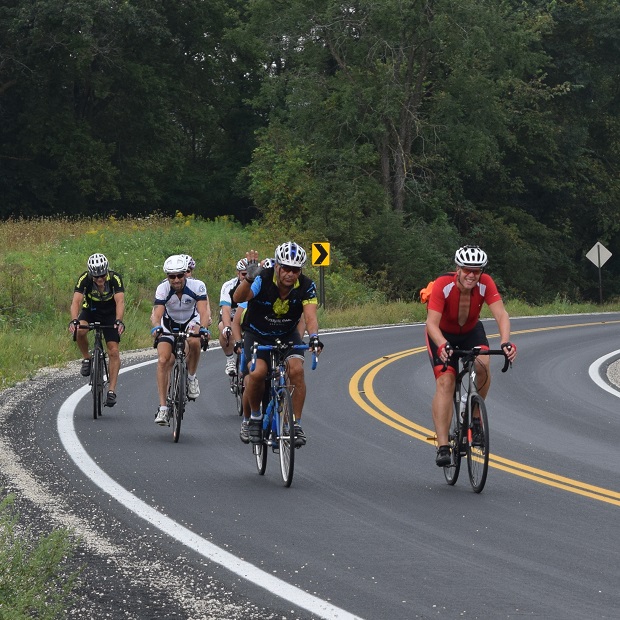A bike is the top form of transit around the world and for good reason: they’re relatively inexpensive to acquire and maintain; they don’t pollute, and they keep their users healthy. You don’t even need to own one! Bike share programs are on the rise globally, making them accessible to everyone.
World travelers benefit from not needing to worry about renting a vehicle or having an international driver’s license and insurance. Instead, they can focus on a more immersive, full-contact experience of their destination.
This increased exposure does require that riders be careful, taking precautions to remain safe in their surroundings. Below you’ll find recommendations on what to bring with you so you can make the most of your ride, as well as some regional-specific tips to help make your trip easy and fulfilling – no matter where you travel.
Personal Safety Gear and Bike Accessories to Carry With You
Between scenic paths in the countryside and jam-packed urban streets, you’ll likely experience a wide range of environments on your bike. Smart cyclists make sure they can get by, even when seemingly stranded in the middle of nowhere. Here are some items you want to make sure you bring:
- ID – Whether you’re making a quick trip to the corner store or riding on a remote mountain trail, you want to make sure you have a way to identify yourself. Even though you don’t need a license to ride a bike, you are still subject to traffic laws and ticketing – including bicycle DWIs in some areas. The safest choice of ID to carry with you internationally is your passport. Be very protective of it, and familiarize yourself with common passport scams. It is good practice to carry a photocopy of your passport in case it gets stolen.
- Credit card, traveler’s checks, or other forms of secure payment – Carrying cash is generally considered to be a poor choice since it makes you an easy target for theft with little you can do to protect yourself should something happen. Many tout credit cards as being the safest form of payment to carry, since most have zero-liability policies in case they get lost or stolen. Many cards don’t charge a foreign transaction fee when used abroad. Traveler’s checks – which are now packaged as prepaid credit cards, sometimes even with chip-and-PIN features – can be replaced within 24 hours if they are lost or stolen.
- Bike helmet – If you are renting/borrowing a bike, check with your provider to see if you can rent a helmet. Many cities around the world are now requiring bikers to wear a helmet, so you should check the laws in your destination. Even if it’s not the law, you should still wear protection since you will be riding on completely unfamiliar terrain as well as likely distracted by the novel sights. If you cannot borrow a helmet, make sure you either pack one in your luggage or else buy one when you get to your destination.
- Cell phone – In case of an emergency, you’ll want to have your cell phone on you. Before you set out, save the number for the local police and emergency services. Make sure your phone is fully charged; consider bringing a back-up battery or even a charger.
- Camera – Many phones come with a built-in camera, so make sure it’s functional or else bring one. Not only will you want to take pictures to remember your trip, but in case something happens – such as you encounter a strange plant or animal, or get into some sort of accident – you’ll want to have a way to document it for later reference. Bonus points if you can capture video (hello, GoPro!). That said, always ask before you take a picture of local people.
- Translation device – Ask Siri or Cortana for help translating on your iPhone or Android phone, consult with any number of translation apps available online, use Google Translate, or refer to a designated translation device (and make sure it’s fully charged!). Make sure you have a way to speak to the local natives in case something happens.
- Water bottle or canteen – This might not be absolutely necessary on a quick city trip, but it’s definitely essential for nature rides of any length. Newer stainless steel models keep your water cold for as long as a day while still being lightweight.
- First aid kit – Even a skinned knee can quickly turn nasty if not tended to quickly! Some of the most common bike injuries are minor cuts and scrapes, as well as bug bites or rashes. Always carry bandages, ibuprofen, duct tape, Benadryl (for strings and allergic reactions), and safety pins with you in your first aid kit, just in case. A common injury on mountain bike rides is a broken clavicle, which you can identify when you feel pain upon touching a lump that appeared on your collarbone after a fall; if this happens to you, move your bike to safety, then fasten your shirt over your elbow using a safety pin, bending your elbow at a right angle. Use your phone to get help before you aggravate the injury further. Whatever the injury, make sure the first thing you do is pull off the road to get to safety.
- For cyclists as well as cars, here is more information on road safety, thanks to our friends at http://teens4safety.com/
Bike Safety Rules By Region Around the World
Fat Bike Tours provides safe, fun and unforgettable bicycle experiences through superior customer service that creates memories and smiles that last a lifetime. Learn more about their tours and company here.
